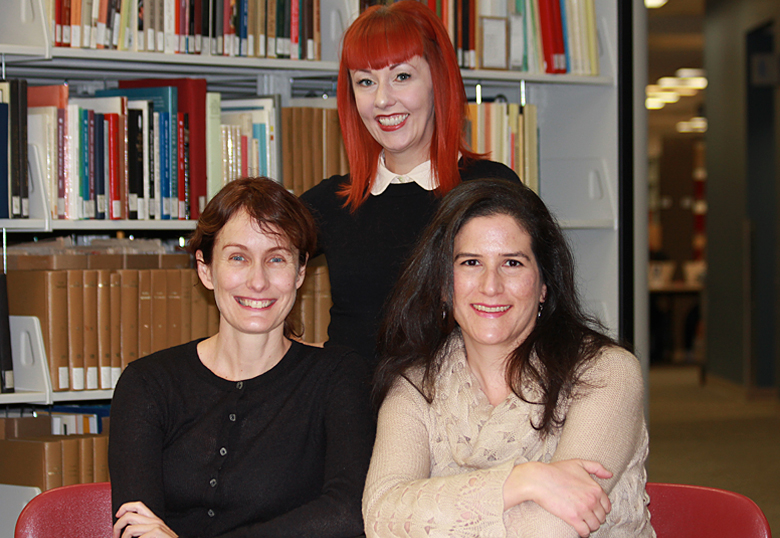In addition to the scholarly work that has been done on Canadian soldiers who served in the First World War, three University of Lethbridge professors have focused their research on the war’s effects on those who were on the home front.
On Wednesday evening, Drs. Kristine Alexander, Amy Shaw and Elizabeth Galway reveal their findings and insights during a presentation called Western Canada at War.
“I’m going to be talking about young people’s experiences on the home front,” says Alexander, a history professor. “In 1914, attending school was compulsory for young people in every province except Quebec, and the war changed what children learned in their classrooms. Across the country, provincial Departments of Education and individual teachers developed new war-related assignments and teaching materials. In mathematics classes, for example, young people were regularly asked to calculate interest rates of Victory Bonds and to solve problems featuring Allied soldiers and German prisoners of war.”

Canadian children also learned about the war in less formal ways: at home and in the press, they often heard talk that demonized the enemy and extolled the virtues of patriotism. They also played with war-related toys, like toy soldiers and toy guns, played war-themed board and card games, and some collected cards featuring weapons or generals that came in cigarette packages.
Alexander will also talk about her latest research project, which involves examining letters written between soldiers and their families back home, to better understand how the war affected wives and children of soldiers.
“Studying the war using personal documents like letters reminds us that war always has a heavy human cost. Even for kids living far from the front lines, the Great War still shaped their lives in ways that could be quite traumatic,” she says.
Dr. Amy Shaw has studied conscientious objectors during the First World War. The government’s conscription law provided an exemption from military service for members of churches, such as Mennonites and Quakers, with proscriptions against violence.
“When you’re trying to understand wartime society, the people who don’t fit in properly are sometimes a good way of understanding the rest of society,” says Shaw. “This was a time, especially during the war but also at the turn of the century generally, when duty was a big part of the way people saw their relationship to the state and to each other.”
Conscientious objectors were often ridiculed, told they weren’t real men, or were over-intellectual or stupid in their blind following of church doctrine. Shaw estimates about 26,000 men were conscientious objectors, which required them to appear in front of a tribunal and state their reasons for objecting.
“Our memory of the First World War tends to be about soldiers fighting and this was a total war that affected people at home and affected people in a lot of different ways. This is a way of looking at the evolving relationship between the citizen and the state,” says Shaw.
Dr. Elizabeth Galway, an English professor, is writing a book about children’s literature during the First World War and has published articles on representations of boy soldiers and depictions of Canadian-American relations. Often, children’s literature was overtly pro-war but Galway’s research has revealed it is more complex than first meets the eye.
“The war influenced every genre of children’s literature, making its presence felt in alphabet books, craft books, school textbooks and more,” says Galway. “In addition, war, national identity and children themselves were depicted in diverse ways.”
While some writers softened images of warfare for young readers, others were more explicit in their accounts of violence. Similarly, some authors saw children as innocent victims of war while others portrayed them as empowered contributors to the war effort.
Canada, as a nation, was portrayed both as a loyal imperial subject and as a fully-fledged nation that proved its strength through achievements on the battlefield. Children’s literature had the power not only to influence attitudes towards warfare, but to shape how readers understood the Canadian nation and the state of childhood.
The Western Canada at War session on Wednesday, Nov. 30 begins at 7 p.m. in the Dr. Foster James Penny Building, PB200, located at 324 5 St. S. Admission is free and a cash bar and appetizers are available at 6 p.m.
